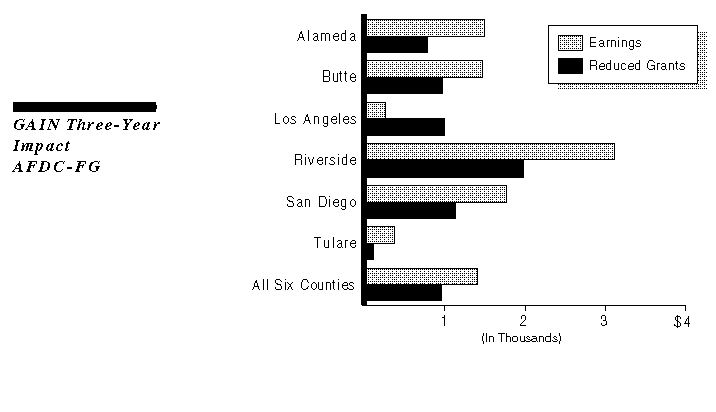
 Legislative Analyst's Office
Legislative Analyst's Office
The Greater Avenues for Independence (GAIN) Program provides basic education and job search and training for adults on AFDC. An independent evalua tion in six counties found that the program had the effect of increasing employment earnings and reducing AFDC grant payments.
The findings in Riverside County are the most notable and provide evidence of the importance of using an employment-focused approach (up-front job search and job development activities) in the program. Riverside County experienced the largest impacts among AFDC-FG participants, with 49 percent ($3,113) higher average earnings and 15 percent ($1,983) lower grant payments than in the control group.

On average across all six counties, AFDC-FG participants in the GAIN Program had three-year earnings that were 22 percent ($1,414) higher than the average earnings in the control group. Over the same period, AFDC-FG grant payments per program participant were 6 percent ($961) lower than in the control group.
The earnings for AFDC-U GAIN participants were 12 percent ($1,111) higher than in the control group. Grant payments per program participant were 6 percent ($1,168) lower than in the control group. As the chart shows, Riverside and Butte counties generally showed the best results for the AFDC-U population.
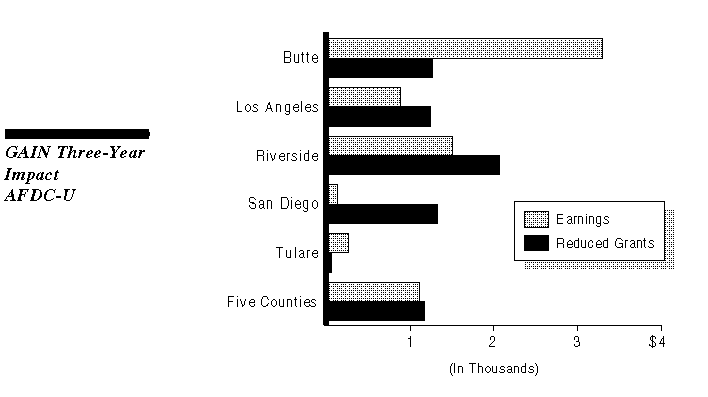
Although the GAIN Program increased earnings and reduced grant costs, it did not result in net savings on average in the six counties. For every dollar spent on GAIN Program services, the returns (measured as savings from lower AFDC grant payments and increased tax revenues due to higher incomes to program participants) were less than one dollar.
However, the program generated net benefits to the government in some counties, with Riverside experiencing the highest returns ($2.84) for every dollar spent for AFDC-FG participants. The higher net benefits, particularly in Riverside, can be attributed to relatively higher earnings and higher AFDC grant savings combined with lower costs per program participant than in the other counties.
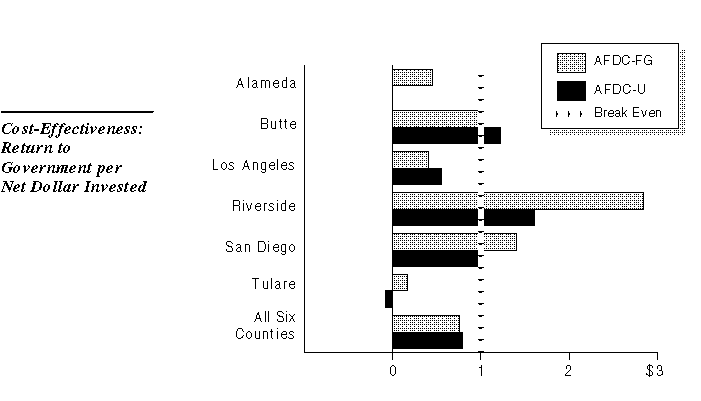
The Child Welfare Services Program consists of four components:
In 1993, 660,942 children were served by the Emergency Response (ER) component of the CWS Program. Of those ER cases, 90 percent were closed after initial intake services were provided, while 10 percent were continued as ongoing CWS cases or transferred to other agencies. The ongoing CWS cases consist of cases transferred to the Family Maintenance component of the CWS Program or to foster care, as part of the Family Reunification or Permanent Placement components.
During the late 1980's, the annual caseload growth rate in the AFDC-FC Program reached as high as 14 percent. Since 1991-92, however, the growth rate has decreased to about 3 percent, due in part to the following:
While the number of child abuse and neglect reports per 1,000 children increased almost 9 percent from about 70 in 1990 to 76 in 1993, the number of foster care placements per 1,000 children actually declined slightly since 1991. As discussed above, this decline is partly attributed to (1) the increased county share of foster care costs in 1991-92 and (2) the expansion of family preservation programs.
An increasing proportion of foster care children are being placed with rela tives. In June 1986, children placed with relatives accounted for 24 percent of the foster care caseload, compared to 45 percent in June 1994. This increasing trend probably results from ongoing efforts to give preference to relative placements over other types of placements.
The proportion of group home placements has been rather steady while the proportion of children placed in non-relative family homes has declined.
During 1993-94, approximately 19,200 foster care cases were closed. The most common reason (67 percent) for this was reunification with the family. Ten percent left foster care because of adoption. These proportions have remained steady over the last five years. As of June 1994, the average length of time spent in foster care was two years.
CHILD WELFARE SERVICES AND FOSTER CARE
Components of the Child Welfare Services Program
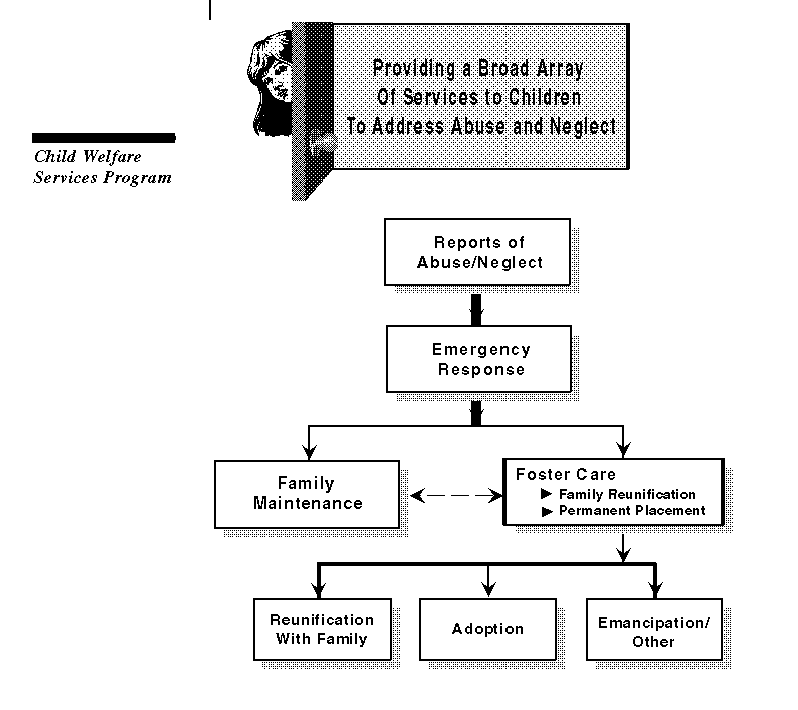
Most Child Abuse and Neglect Cases Are Closed After Initial Intake
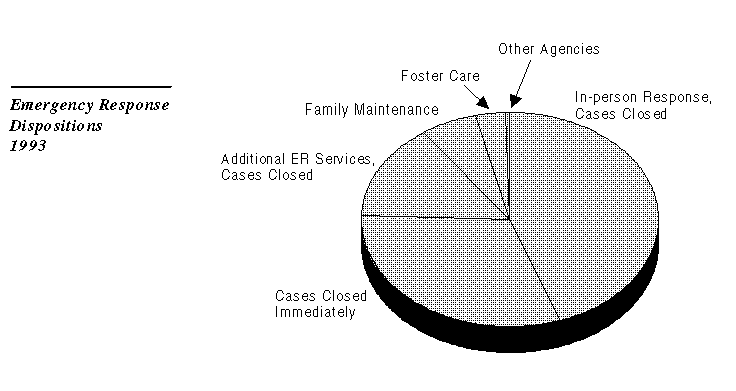
Foster Care Caseload Growth Has Slowed Significantly Since 1991-92
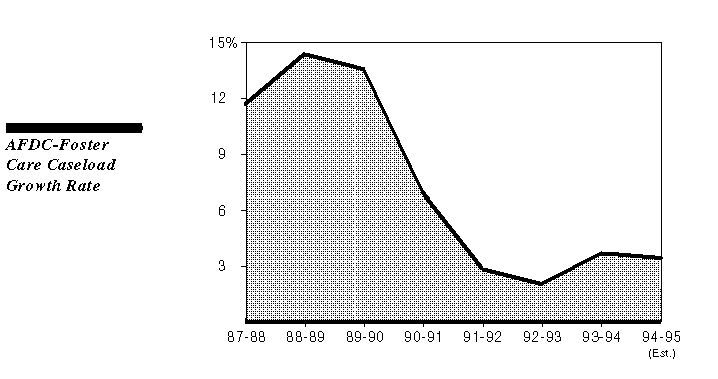
More Foster Care Children
Being Placed with Relatives
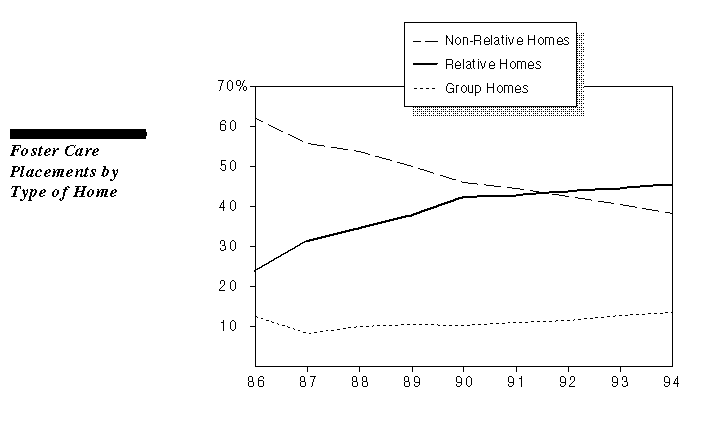
Most Children Who Leave Foster Care Are Reunified With Families
